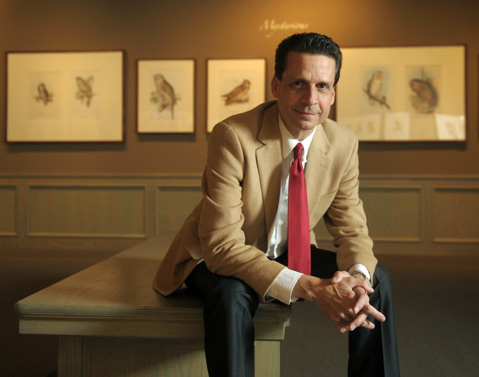No New Buildings for Museum of Natural History
Santa Barbara Institution Dramatically Scales Back Renovation and Expansion Plan

Faced with community resistance, ambitious fundraising goals, and the likelihood of having to temporarily close the institution, the Santa Barbara Museum of Natural History is no longer seeking a grand expansion plan for its historic campus in Mission Canyon, where the scaled back focus will now be on renovating existing structures to enliven the visitor experience.
“The more we studied what it was going to cost and that it would involve closing the museum for well over a year, we said, ‘Does that really make sense?’,” explained the museum’s CEO Luke Swetland, who took over in 2012 as the retiring director Karl Hutterer’s plan was sparking the ire of some neighbors. “The original goals of the master planning process were: How do we improve the visitor experience? How do we make it relevant? How do we take advantage of this unique natural setting and create a wonderful indoor-outdoor nature experience? Those goals are still front and center in what we’re proposing. But we can achieve this transformation much faster without ever having to close the institution.”
Specifically, the new plan, which will be submitted to city planners early next year, will: bring the entire facility into compliance with Americans with Disabilities Act rules; open up the outdoor environment with more signage and improved landscape; create a handful of new gallery experiences within the existing space; incorporate staff scientists into the museum, allowing the public to see their work and interact with naturalists; and enhance the popular galleries that already exist by installing new lighting, better displays, and new science.
And this is not just the first phase of a project that will include future buildings or road realignments or moving of other structures like the MacVeagh House in the future, as had been proposed. “The three-phase project, I think, has been tabled forever or at least for the foreseeable future,” said Swetland, who anticipates the smaller project may be as much as 75 percent cheaper than the original plan, which may have cost more than $100 million.
Additionally, Swetland has backed off the controversial high attendance figure of 195,000 that was set in 1989, and instead will be requesting an average attendance limit of just 165,000. “When I asked the team to study what would the visitor experience look like if we have 195,000 people on the site over the year,” said Swetland, “it wouldn’t look very pleasant.”
The biggest challenge will be making the collections and staff work space more efficient, as that was one of the main arguments for the extra space proposed in earlier plans. But Swetland believes that can be tackled by incorporating the staff into some of the public museum space, by installing more efficient storage systems, and by moving some of the collections offsite.
Altogether, Swetland hopes to enjoy less community resistance and a “substantially” less onerous planning process “because we’re really not asking for anything new and big and hairy.” He explained, “We are hoping to effect a vision for change that’s bold but prudent. It really is the museum finding its sweet spot after a really thoughtful four years of thinking about a lot of options.”



